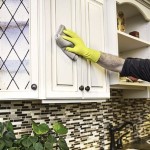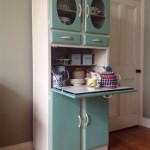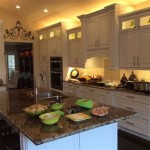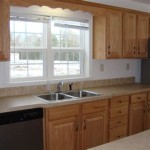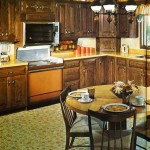Which Material Is Not Recommended For Kitchens?
The kitchen, a central hub in any home, demands careful consideration of materials used in its construction and design. Durability, hygiene, aesthetics, and ease of maintenance are paramount concerns. While numerous materials offer desirable qualities for kitchens, some exhibit inherent limitations that render them unsuitable or less than ideal for certain applications. Understanding these limitations is crucial for making informed decisions and creating a kitchen that is both functional and aesthetically pleasing.
This article explores a variety of materials often encountered in kitchen designs and highlights those that are generally not recommended, along with the reasons for their unsuitability. The discussion will encompass aspects of countertops, flooring, cabinetry, and backsplashes, providing a comprehensive overview of material choices and their respective drawbacks.
Porous Stone Countertops
Natural stone countertops, such as marble and limestone, have long been favored for their elegance and unique veining. However, their porous nature poses significant challenges in a kitchen environment prone to spills and food preparation. Porosity refers to the presence of microscopic pores within the material's structure, allowing liquids and other substances to penetrate its surface.
Marble, while visually stunning, is particularly susceptible to staining from common kitchen ingredients like red wine, coffee, oil, and acidic substances like lemon juice or vinegar. These spills can seep into the pores, leaving permanent discolorations that are difficult, if not impossible, to remove. Similarly, limestone, also a porous material, is prone to staining and etching. Etching occurs when acidic substances react with the calcium carbonate in the stone, resulting in a dull or textured appearance.
The porous nature of these stones also makes them susceptible to harboring bacteria and other microorganisms. While regular cleaning can help, it is impossible to completely eliminate the risk of bacterial growth within the pores, raising concerns about food safety and hygiene. Furthermore, the inherent softness of marble and limestone makes them prone to scratching and chipping, particularly in high-traffic areas or with the use of abrasive cleaning products.
Although sealing can offer a degree of protection, it requires regular application and may not completely prevent staining or etching over time. The need for constant maintenance and the risk of irreversible damage make porous stone countertops a less desirable option for many kitchens. Alternative countertop materials, such as granite, quartz, or solid surface materials, offer superior durability, stain resistance, and ease of maintenance, making them better choices for most kitchen applications.
Unsealed Wood Flooring
Wood flooring adds warmth and natural beauty to any space, including the kitchen. However, solid hardwood flooring, particularly when unsealed or improperly sealed, presents several challenges in a kitchen environment. The primary concern is wood's susceptibility to moisture damage.
Kitchens are exposed to frequent spills, water leaks, and high humidity levels. Unsealed wood readily absorbs moisture, causing it to swell, warp, and eventually rot. This moisture absorption not only compromises the structural integrity of the flooring but also creates a breeding ground for mold and mildew, posing health risks and unpleasant odors. Gaps can form between the planks, trapping dirt and debris and making cleaning difficult.
Even with a sealant, ongoing maintenance is crucial. Regular re-sealing is needed to maintain a protective barrier against moisture penetration. Water left standing on the surface for extended periods can still seep through cracks in the sealant or around the edges of the planks, leading to damage. Furthermore, wood is relatively soft and can be easily scratched, dented, or gouged by dropped objects, pet claws, or regular foot traffic.
While engineered wood flooring offers improved moisture resistance compared to solid hardwood, it still requires careful selection and installation. The core layer of engineered wood is typically made of plywood or high-density fiberboard (HDF), which is less susceptible to swelling and warping than solid wood. However, the top veneer of real wood is still vulnerable to moisture damage and scratching. Alternatives like tile, vinyl, or laminate flooring offer superior water resistance and durability for kitchen applications. If wood flooring is desired, careful selection of a water-resistant species and professional sealing are essential.
Low-Quality Laminate Cabinetry
Laminate cabinetry, a common and often affordable option, consists of a thin layer of decorative laminate bonded to a substrate like particleboard or MDF (medium-density fiberboard). While laminate cabinets can be aesthetically pleasing and easy to clean, low-quality versions present significant drawbacks in terms of durability and longevity, particularly in the demanding environment of a kitchen.
One of the primary concerns with low-quality laminate is its susceptibility to water damage. If water penetrates the laminate layer through cracks, chips, or poorly sealed edges, the underlying particleboard or MDF can swell and disintegrate. This swelling can cause the laminate to delaminate, creating unsightly bubbles and warped surfaces. Repeated exposure to moisture can render the cabinets structurally unsound and necessitate replacement.
Furthermore, low-quality laminate is often thin and prone to scratching, chipping, and peeling. The edges of the laminate can be particularly vulnerable to damage, especially in high-traffic areas or with frequent use. Over time, even minor damage can detract from the appearance of the cabinets and compromise their functionality. Hardware that is poorly installed or of low quality can also contribute to the deterioration of laminate cabinetry.
While higher-quality laminate cabinets offer improved durability and moisture resistance, they often come at a higher price point. Alternative cabinetry materials, such as solid wood, plywood, or stainless steel, offer superior durability and longevity for kitchen applications. When selecting laminate cabinets, it is crucial to choose a reputable manufacturer and opt for thicker, more durable laminate with properly sealed edges to minimize the risk of water damage and wear and tear. Investing in quality hardware and proper installation is also essential for ensuring the long-term performance of laminate cabinetry.
Unsealed Grout on Backsplashes
Tile backsplashes provide a durable and aesthetically versatile surface for protecting kitchen walls from splashes and spills. However, the grout that fills the spaces between the tiles is porous and susceptible to staining, mold growth, and deterioration if left unsealed or improperly sealed.
Grout is typically made of a mixture of cement, sand, and water. Its porous nature allows liquids and other substances to penetrate its surface, leading to staining from common kitchen ingredients like grease, food particles, and cleaning products. Over time, stains can become deeply embedded in the grout, making them difficult or impossible to remove. This can detract from the overall appearance of the backsplash and create an unsanitary environment.
The porous nature of grout also makes it susceptible to mold and mildew growth. Moisture trapped within the grout can create a breeding ground for these microorganisms, leading to unsightly discoloration and unpleasant odors. Mold and mildew can also pose health risks, particularly for individuals with allergies or respiratory problems. Furthermore, unsealed grout can crumble and crack over time, creating gaps between the tiles and allowing water to penetrate behind the backsplash, potentially causing damage to the wall.
Sealing grout provides a protective barrier against moisture and stains. However, it is crucial to choose a high-quality grout sealer and apply it properly according to the manufacturer's instructions. Regular re-sealing is necessary to maintain the protective barrier, typically every one to two years, depending on the type of sealer and the frequency of use. Alternatives like epoxy grout offer superior stain resistance and durability compared to traditional cement-based grout, making them a better choice for high-moisture areas like kitchens and bathrooms. Regular cleaning and maintenance are also essential for preventing staining and mold growth, even with sealed grout.
Painted Raw Wood Countertops
While the idea of a painted raw wood countertop might seem appealing from an aesthetic and potentially cost-effective standpoint, it is a choice fraught with practical drawbacks, rendering it highly unsuitable for the demanding environment of a kitchen.
Raw wood, by its very nature, is highly porous. Without proper treatment and sealing, it acts like a sponge, readily absorbing any liquid that comes into contact with it. In a kitchen setting, this means absorbing spills of water, juice, oil, and other cooking ingredients. This absorption leads to swelling, warping, and eventually, rotting of the wood. The paint, while providing a superficial layer of protection, is not sufficient to completely block moisture intrusion.
Furthermore, the nature of painted surfaces makes them prone to chipping and scratching. Kitchen countertops endure significant daily wear and tear from cutting, chopping, and placing hot items. Paint, even with multiple coats, is not as durable as materials designed for countertop use, such as granite, quartz, or stainless steel. Any damage to the paint layer compromises its already limited protective ability, allowing moisture to penetrate the raw wood beneath.
Hygiene is another significant concern. Raw wood is difficult to sanitize properly. Even with frequent cleaning, the porous nature of the wood allows bacteria to thrive within its structure. Combined with the potential for moisture and mold growth, a painted raw wood countertop presents an unsanitary surface for food preparation.
Attempting to seal the wood adequately beneath the paint can be problematic. Many sealants are not designed to be painted over effectively, which can lead to adhesion issues and premature paint failure. Even with diligent sealing and painting, the maintenance demands for a painted raw wood countertop are exceptionally high. Regular re-sealing and repainting would be necessary to maintain a semblance of protection and aesthetic appeal. For these reasons, it's advisable to consider alternative, more durable and hygienic materials specifically designed for kitchen countertop applications.

Ready For New Kitchen Cabinets Read This First Misty Mountain Cabinetry

Countertop Comparisons Which Material Is Right For Your Home Ozarks Remodeling Design

The Best Kitchen Cabinet Material And Why You Ll Love It Dailey Manufacturing Co

4 Great Alternatives To Marble Countertops

64 Kitchen Cabinet Design Ideas 2024 Unique Styles

30 Top Kitchen Trends 2024 Color Countertop And Tile Ideas

Why Kohler Stainless Steel Sinks
2024 Kitchen Trends That Are In And Out According To Designers

90 Best Kitchen Ideas Decor And Design Photos

Top 40 Kitchen Trends For 2024 That Our Editors Love
Related Posts

